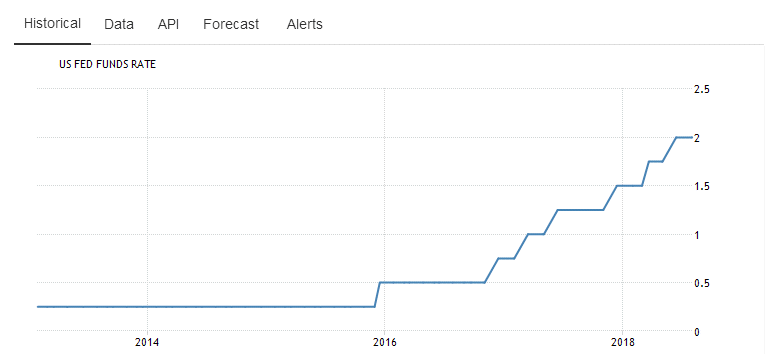In August, the Federal Reserve announced that there would be another raise in the interest rates by a quarter of a percentage point. The vote to raise the rates was unanimous, with all eight of the participants in agreement. They also signaled that there could be an additional two raises over the course of the remaining year, and potentially even more raises than that. This means that the officials at the Federal Reserve are expecting and on track for there to be four increases in the rate this year, which is up from the earlier prediction of three.
The Rates Could Rise Even More During the Remainder of 2018
Most of the experts believe that there will be at least three raises in 2019 and another three in 2020, which could end up putting the rates between 3.25% and 3.5% by the end of the year in 2020. The Federal Reserve later released a statement that the labor market was strong and that the economic activity had been rising solidly. The officials have projected that the gross domestic product will be increasing 2.8% in 2018, which is up by 0.1% from the earlier projection.
Additionally, they believe that the unemployment rate is on track to fall further than the projected amount this year, as well. The early projections were that unemployment would be at 3.8%, while the current projection is that it will be down to 3.6%.
With the new insight into what’s happening with the interest rates, it appears that even after raising the rates and having them reach what is called a “neutral level”, they will continue to raise the short term rates. The neutral level is a term that means the rates are at a point where they are not going to either slow the economy now stimulate it.
The overall economic outlook for the country does seem to be positive, at least according to the U.S. central bank. The bank has upgraded the outlook due to several different factors including rise in global growth, tax cuts that have been approved by congress, and an increase in the amount of federal spending.
What Does This Means for Those Who Want to Buy a Home?
While a rise in the rates might indicate that the overall economy is performing better, those who are considering buying a property will want to think about how the rise in the interest rates are going to affect them. When the Fed raises the rates, it means that the lenders are going to raise their rates accordingly. When this happens, the mortgage rates are going to increases, as you would expect. This will then make it more expensive to buy homes.
However, it does not mean that the homes are going to be come prohibitively expensive, of course. Those who have good credit can still get some very good rates when they get their mortgage, which helps to keep the homes in line with the market and what people are willing and able to pay.


